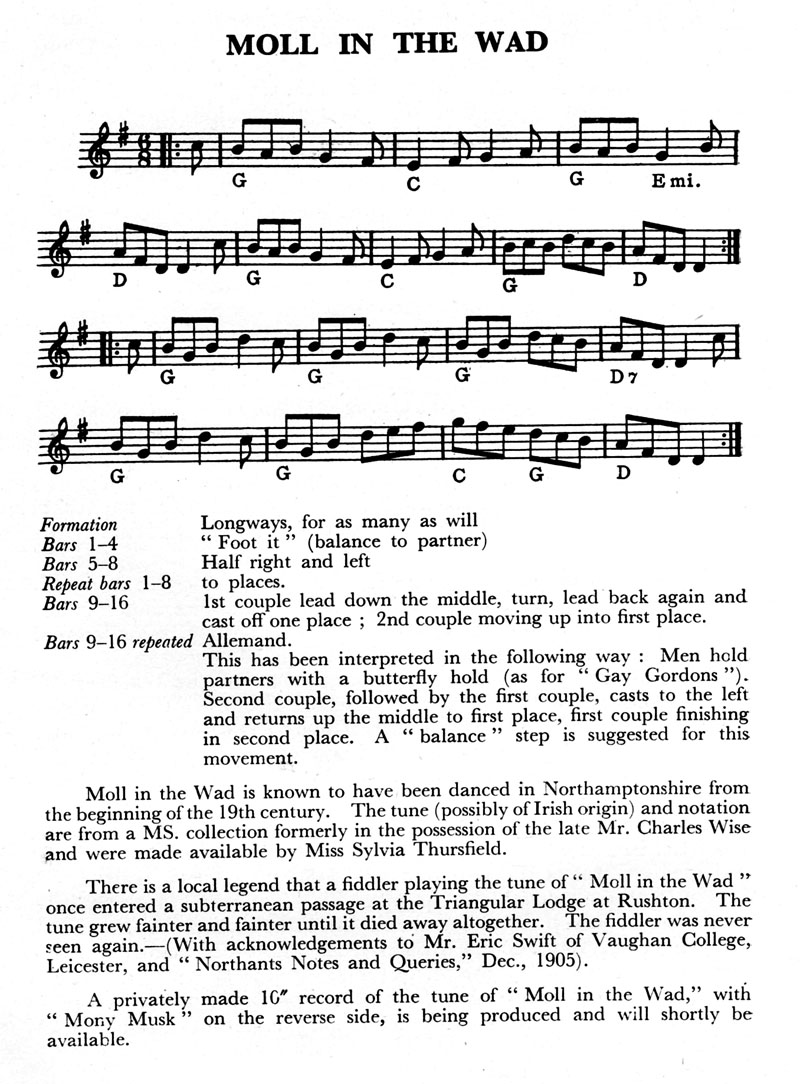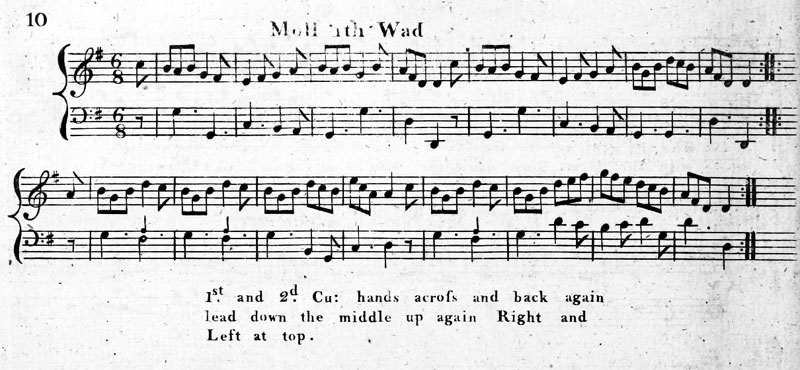Original page from English Dance & Song, Dec. 1953 Jan.1954

Back to Dance Index
| A1 |
Foot It (8)
Two Changes of Rights & Lefts (8) |
| A2 | Repeat to Place |
| B1 |
#1s Lead Down, Turn Alone (8)
#1s Lead Up and Cast Down One Place - #2s Move Up (8) |
| B2 | In Gay Gordon's Hold: Double Cast to Progessed Places (16) |


I'd love to hear from you if you know anything more about this dance, its composer, its style, or its history.
Feedback is very welcome on any aspect of these dances or Web pages.
Please contact John Sweeney with your comments.
